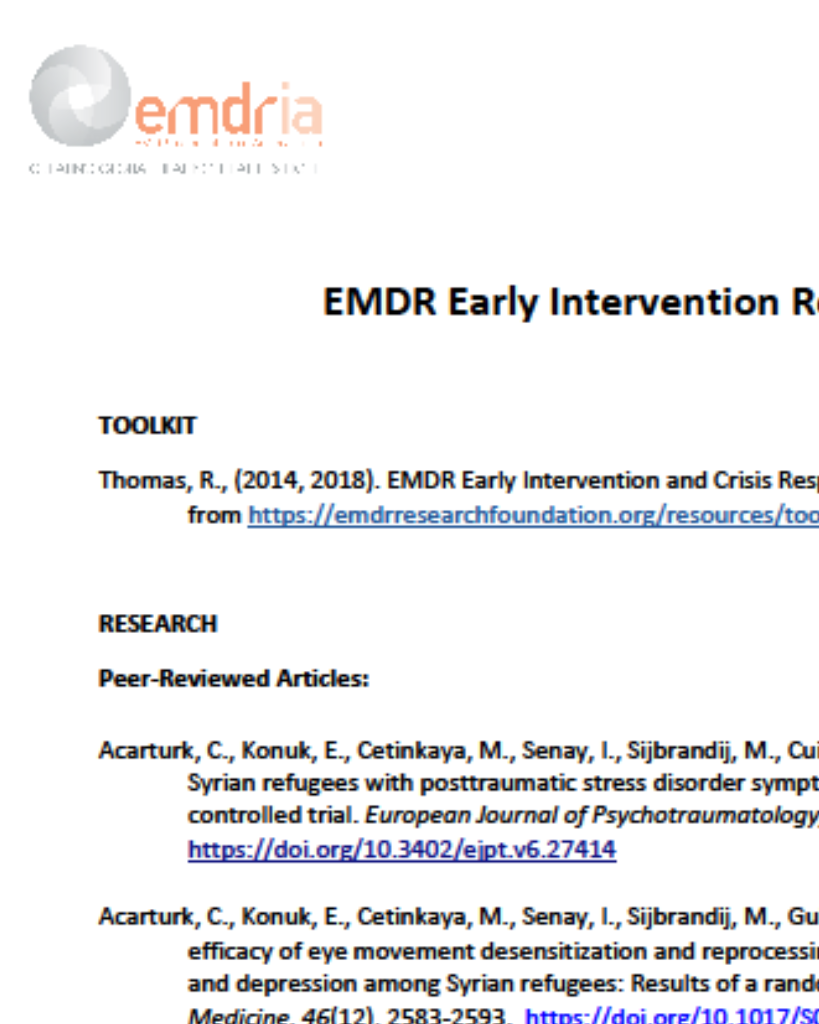What psychological testing and neuroimaging tell us about the treatment of posttraumatic stress disorder (PTSD) by eye movement desensitization and reprocessing
Study on the pathophysiology and treatment of PTSD before/after EMDR through psychological testing, Rorschach Ink Blot, and neuroimaging.
Article Abstract
“To better understand the pathophysiology and treatment of Posttraumatic Stress Disorder (PTSD), standard psychological testing, Rorschach Ink Blot testing, and neuroimaging using Single Photon Emission Computed Tomography (SPECT) were administered to subjects with PTSD prior to and following three sessions of Eye Movement Desensitization and Reprocessing (EMDR). Using this within-subject design, data from one of six subjects in our series is presented as a case report. Following EMDR, the subject experienced improvement in his level of distress, which correlated with decrements in PTSD and depressive symptomatology on psychological testing. Analysis of the Rorschach data corroborated these changes. Among other findings, the Hypervigilance Index went from positive to negative, indicating that the subject was spending less time scanning the environment for threats, and available ego resources also increased, as measured by the Experience Actual variable. Upon recall of the traumatic memory during SPECT scanning, two areas of the brain were hyperactive post-EMDR treatment relative to pretreatment: the anterior cingulate gyrus and the left frontal lobe. These changes were consistent with summed data from four out of six subjects in the ongoing study. An important implication of these findings is that successful treatment of PTSD does not reduce arousal at the limbic level, but instead, enhances the ability to differentiate real from imagined threat. The psychology and neurophysiology of PTSD are discussed in greater detail.”
—Description from publisher
Article Access
Open Access
Levin, P., Lazrove, S., & van der Kolk, B. A. (1999). What psychological testing and neuroimaging tell us about the treatment of posttraumatic stress disorder (PTSD) by eye movement desensitization and reprocessing. Journal of Anxiety Disorders, 13(1-2), 159-172. https://doi.org/10.1016/s0887-6185(98)00045-0
Date
January 1, 1999
Creator(s)
Patti Levin, Steven Lazrove, Bessel van der Kolk
Practice & Methods
Mechanisms of Action, Neurobiology
Extent
14 pages
Publisher
Elsevier
Rights
Copyright © 1999 Elsevier Science Ltd. All rights reserved.
APA Citation
Levin, P., Lazrove, S., & van der Kolk, B. A. (1999). What psychological testing and neuroimaging tell us about the treatment of posttraumatic stress disorder (PTSD) by eye movement desensitization and reprocessing (EMDR). Journal of Anxiety Disorders, 13(1-2), 159-172. https://doi.org/10.1016/s0887-6185(98)00045-0
Audience
EMDR Therapists, Other Mental Health Professionals
Language
English
Content Type
Article, Peer-Reviewed
Access Type
External Resource





